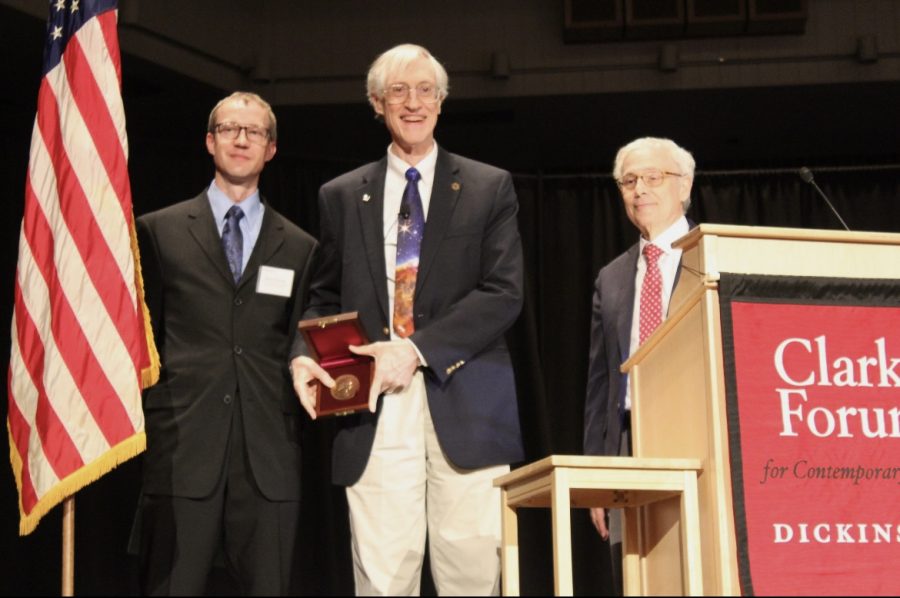Nobel Laureate and Universe Explorer Mather Delivers Priestley Lecture
On Tuesday, March 28, Dickinson College awarded its 71st Joseph Priestley Award to Dr. John C. Mather, who is the Senior Project Scientist and Senior Astrophysicist for NASA’s James Webb Space Telescope at the Goddard Space Flight Center. The Joseph Priestley Award is given every year to one scientist who has used their work to contribute to humanity’s welfare.
Already a well-awarded individual — Dr. Mather was named one of Time’s Top 25 Influential People in Space — his career has been highly impactful in space exploration efforts and astrophysics, which he discussed in the lecture.
Mather became a Nobel Laureate for his work on the Cosmic Background Explorer, a satellite that measured cosmic background wave radiation and ended up finding dark matter, expanding human understanding of the universe. His work proved that the universe is infinite, and has always been so.
In the lecture, Mather outlined the recent history of space telescopes, advocacy for which began in 1946, and accelerated when NASA was created in response to the USSR’s Sputnik satellite in 1958. The technology that was developed and built in the early years of NASA, including that for the Apollo program, was an expensive investment that continues to support NASA’s scientific research today.
The James Webb Space Telescope, a program which Mather has been involved in since its inception in 1995, was launched into space on December 25, 2021, and sent back to Earth its first pictures of the cosmos last July.
The telescope uses infrared light to capture images, which Dr. Mather said can also help scientists understand ultraviolet waves, and the pictures it sends back to Earth reveal new knowledge about the universe. The telescope is projected to have a twenty-year lifespan.
Dr. Mather also highlighted its predecessor, the Hubble Space Telescope, which has been in service for 33 years. The beautiful pictures of the Hubble Space Telescope, which many people are familiar with, have given massive contributions to science in their own right, which the James Webb Space Telescope continues to improve and expand upon.
He commented on the near future of space research, which he said the whole of humanity can look forward to. This summer, the European Space Agency will launch Euclid, another infrared telescope which will measure dark matter and energy. In 2027, NASA will launch the Nancy Grace Roman Space Telescope, which will be the even more advanced successor to the James Webb Space Telescope. And in 2034, a NASA helicopter will be sent out to Saturn’s largest moon, Titan, which could potentially have appropriate conditions for life.








